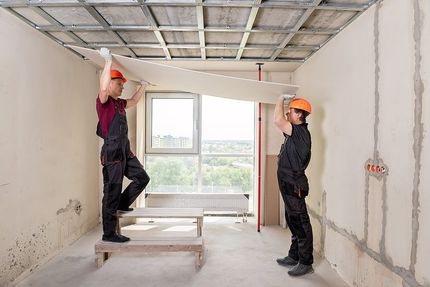Total Guide to Efficient and Dependable Drywall Setup
Drywall setup is an important element of any building or improvement job, demanding a thorough method to make sure both efficiency and dependability. Understanding the vital tools and methods is vital, as well as acknowledging common challenges that can cause substandard outcomes. By systematically preparing the area and applying best practices, one can attain a remarkable coating that stands the test of time. It is necessary to discover the nuances of each action in the process, as they jointly contribute to the total success of the drywall setup. What details techniques can raise your method?
Vital Tools for Drywalling
When beginning on a drywall setup project, having the right tools is essential for achieving a specialist surface. Vital tools consist of a drywall knife, tape action, and a T-square, which are basic for accurate dimensions and smooth cuts. A drywall lift is also extremely valuable, particularly for ceiling setups, enabling much easier handling of hefty panels.
For securing the drywall, a cordless drill and drywall screws are necessary. The drill needs to be furnished with a drywall little bit to ensure efficiency and precision. In addition, a key device is the drywall saw, which promotes cutting around electric outlets and other obstacles.

Furthermore, safety equipment such as security glasses and a dirt mask are necessary to guarantee individual safety during the setup process. Making use of the right tools not just enhances the high quality of the setup yet also improves the process, making the project more efficient overall.
Preparing the Room

Next, examine the problem of the walls and ceilings. Repair any existing damages, such as holes, splits, or peeling paint, to guarantee a smooth and also surface area for drywall application. Additionally, check for electric outlets, pipes lines, and heating and cooling ducts, noting their places to stay clear of issues during setup.
It is also important to i loved this measure the space accurately, establishing the measurements of the ceilings and walls to calculate the ideal quantity of drywall needed. Develop a thorough plan that consists of the layout and orientation of the drywall panels.
Installation Methods
Efficient installment strategies are vital for achieving a professional finish in drywall jobs. Proper dimension and cutting of drywall sheets are essential actions. Constantly gauge the wall area precisely, permitting any type of electrical outlets or buttons. this Make use of an energy blade for tidy cuts, scoring the paper face and breaking the board along the racked up line.
When hanging drywall, begin with the leading and job downward, making sure that the lengthy edge of the board is perpendicular to the framing. Protect the sheets with screws instead than nails, which provide greater holding power and decrease the risk of standing out. Area screws every 12 inches along the sides and every 16 check that inches in the area of the board.
For corners, utilize edge grains to achieve sharp, clean sides. When mounting on ceilings, utilize a drywall lift or have a companion assist in holding the sheets in area (drywall installation). Maintain a void of concerning 1/4 inch over the floor and ceiling to suit expansion and tightening
Finishing Touches

When the tape is in place, it's time to use the very first layer of joint substance, additionally recognized as mud. Utilize a 10 to 12-inch taping knife to spread the compound equally over the taped joints, feathering the sides to mix with the bordering drywall.
Allow the compound to completely dry completely, normally 24 hr. After drying out, sand the surface area lightly with fine-grit sandpaper to remove any imperfections. sheetrock repair fort worth. Repeat the mudding and sanding process, usually a couple of coats, making sure each layer is smooth and flush with the drywall surface
Typical Errors to Stay Clear Of
Numerous do it yourself enthusiasts run into mistakes during drywall installation that can jeopardize the outcomes. One common mistake is failing to appropriately determine and reduce drywall sheets. Inaccurate cuts can bring about gaps and uneven seams, making ending up much more labor-intensive. Additionally, overlooking to stagger joints can create powerlessness in the wall, causing possible sagging or cracking over time.
One more regular mistake is inappropriate attachment. Utilizing also couple of screws or nails can result in loose drywall, while overdriving fasteners can create the paper to tear, deteriorating the framework. It's vital to maintain regular spacing, normally every 16 inches, and to ensure that fasteners are flush with the surface.
Furthermore, not attending to moisture problems before installation can result in mold growth and structural damage. Always analyze the setting and usage moisture-resistant drywall in high-humidity locations.
Verdict
Reliable and reputable drywall installation requires meticulous interest to detail throughout the procedure. Staying clear of common mistakes better adds to a specialist result, highlighting the importance of accuracy and method in successful drywall tasks.
It is necessary to check out the nuances of each action in the process, as they collectively contribute to the total success of the drywall installment.When embarking on a drywall setup task, having the right tools is crucial for attaining an expert finish.For attaching the drywall, a cordless drill and drywall screws are needed.Correctly preparing the area is vital for a successful drywall installation.Efficient setup techniques are essential for attaining a specialist finish in drywall projects.